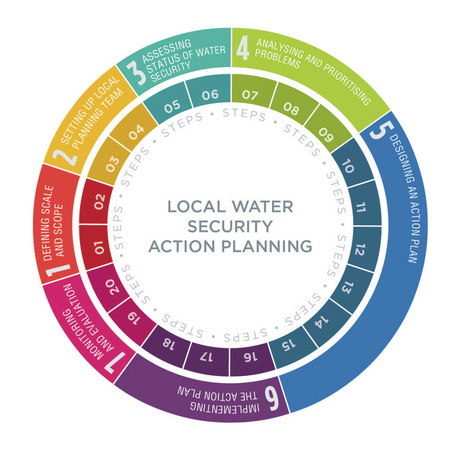Overview of an Initiative for ChangeThe general process for an initiative for change may be as follows:
[Align graphic with our steps] |
Define Scope |
Your first step is to consider the scope of your issue. Perhaps you are a water treatment plant operator looking for additional training, certification or technical support. Maybe you are a community member curious about the taste of chlorine in the water or interested in learning more about what your water bill supports. In cases such as these, an initiative for change may not be necessary. You may be able to find the answers you need by jumping straight to the resources for customers, water utility staff or community leaders.
But ask around; you may find that your neighbors share your concern and that the entire community could benefit from knowing the answers to the same questions you have. If this is the case, or if the issue is complex, persistent or impacts a large proportion of the community, you may find it worthwhile to follow the remaining steps for action planning and carry out a full scale initiative. |
Form a Water Committee |
Issues concerning water often impact the entire community, so it is likely that any actions to address those issues will require collaboration between community members, water utility staff and community leaders and administrators. Community members represent the greatest proportion of people likely to be impacted by the outcomes of an initiative, so it is critical that they have a voice in the process. The water utility staff holds the specialized knowledge of all that goes into providing water and sewer service and keeping a plant running. Community leaders and administrators have the influence and capacity to make decisions and initiate actions in the best interest of the community as a whole. As you begin to form your team, make sure to identify a point of contact in each of these three groups.
Carrying out an initiative for change will benefit from the oversight of a team, or Water Committee, composed of representatives from the community, water utility and local government that are invested in the long term sustainability of the local water system. Participation of multiple representatives from each of these groups would be valuable. The recommended size of a committee is 6-10. At a minimum, the Water Committee should meet in between the completion of each of the following steps for action planning. |
Conduct an Assessment |
Before engaging in an initiative for change it is critical to understand the community involved, the issue and any preconceptions that people may have. Even though you may be a community member yourself, it is important to take the time to talk with others to gather further insight into concerns and interests. Investing time upfront will save you time, money, and frustration later on in the initiative. You will be better able to identify the roots of an issue and address those in ways that are meaningful and impactful to your community.
You can find a tremendous amount of information on many issues by conducting webs searches, but you will also want information on an issue’s distinct impacts on your community. A common method for gathering community specific information is to conduct a formative assessment. Formative assessment refers to a variety of actions that help you to form a clearer picture of the nature of the issue at hand. This may include informal conversations with neighbors or casual observation of behavior. Formative assessments often include a survey of some kind. These surveys could take a variety forms, from optional online questionnaires to more systematic verbally administered surveys conducted door-to-door. Formative assessments will help you to hone in on the root values, motivators, needs and information gaps that drive community member’s decisions and actions. The information gathered in this process will help to inform the Water Committee on the appropriate outreach in which to engage. For more information on conducting your own formative assessment and to see examples of surveys that others have used in their own formative assessments, click the link below. |
Utilize Toolkit to
|
|
Take Action |
As part of your Water Committee’s plan for action you will have developed a schedule of clearly defined actions as well as a timeline over which you hope to carry each action out. Now it’s time to put that plan into action! During this step you’ll want to make sure that the Water Committee has set a regular meeting schedule to reflect on the progress of the initiative and adapt to any issues that arise.
|
Evaluate Outcomes
|
After the initiative or outreach has been carried out, it is time for the Water Committee to sit down together and consider the outcomes. The outcomes may be easily observed or may require a more systematic follow up survey or interviews with those impacted. Has the behavior changed? Are community members that were previously unable to pay bills now able and paying? Are community members that were drinking untreated water now drinking treated water? Are there now sufficient funds allocated to system operation and maintenance that weren’t there before?
There may still be room for improvement. This is the step where the Water Committee can take time to reflect and update the initiative based on the outcomes and any needs or concerns that remain. |

